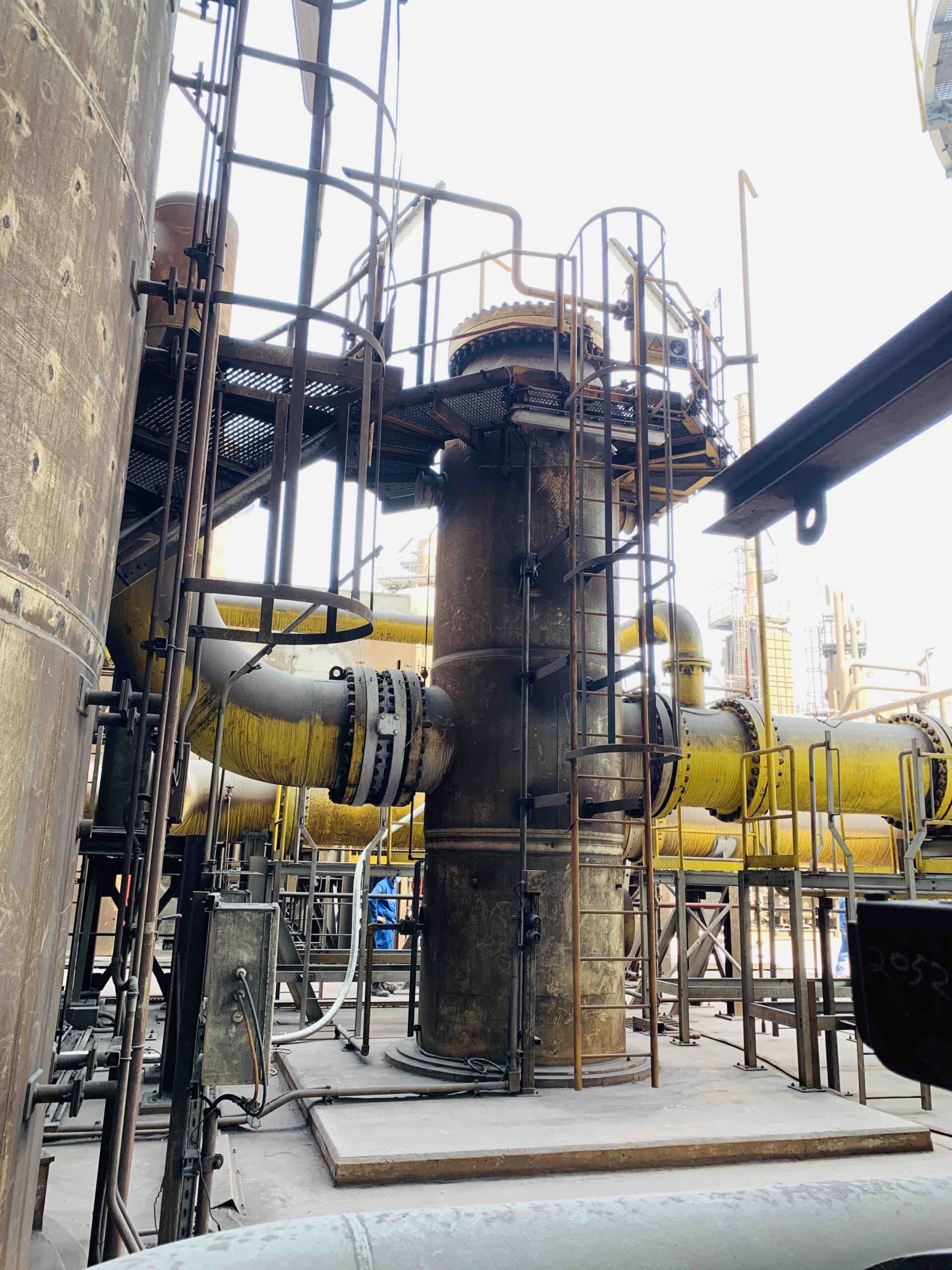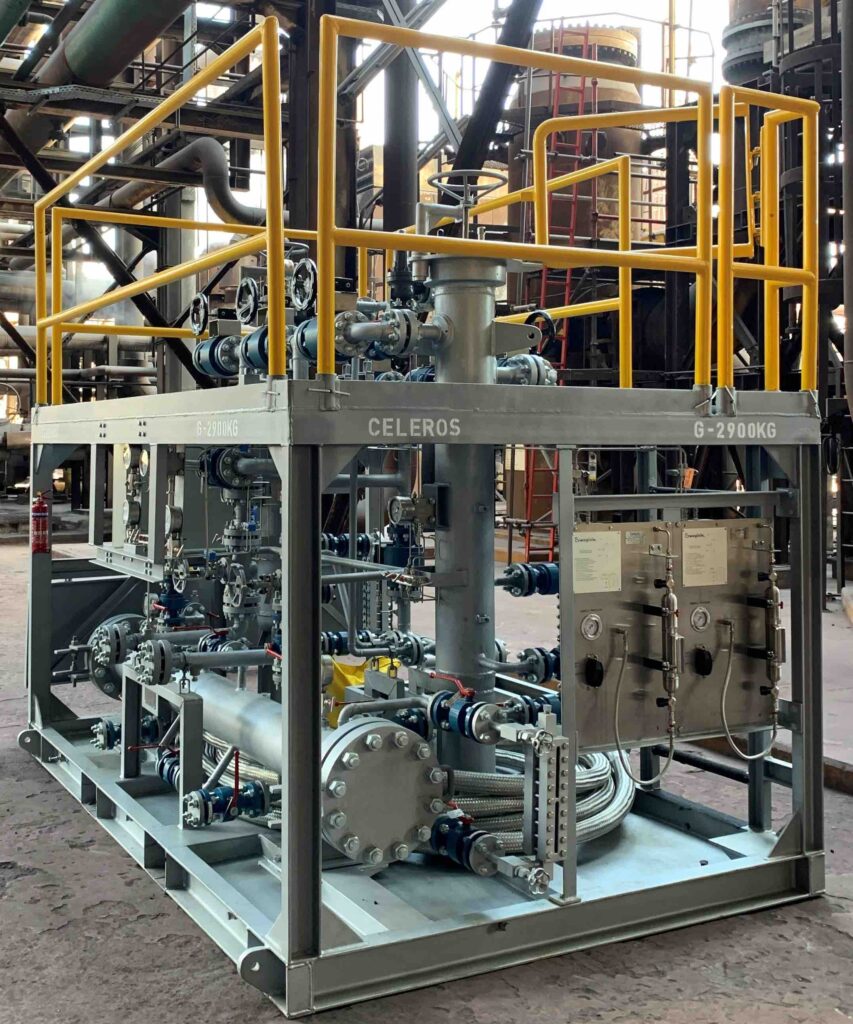Using its on-site Gas Filtration Test Skid, Celeros Flow Technology was able to conduct detailed analysis of the solid and liquid contaminants in the gas stream without interruption to normal operations. The tests identified the causes of poor performance and premature equipment failure in the upstream and downstream filtration systems associated with the exhaust gas reprocessing system. The test results were then used to recommend ways to optimise the filtration system and improve operational efficiency.
Steel production
The customer makes steel wires, rolls and sections of different shapes, sizes and specifications, using process gas to reduce iron ores into iron pellets for introduction into an arc furnace. An important by-product of the reduction process is the exhaust process gas from the direct reduction plant (DRP) reactor. The gas passes through different rehabilitation units to remove heat, solid and liquid contaminants before being introduced to a gas compressor, which recycles the gas to the reactor at the correct pressure.
As a final part of this gas conditioning process, the DRP has been equipped with filters intended to retain solid contaminants down to 50μm. However, the customer was experiencing higher change out frequencies than expected on this existing filtration system. An increase in filter demand may indicate that higher levels of contamination are present, which can lead to prolonged operational disruption. A concentration of solid and liquid contaminants in the recycled gas stream can severely damage the downstream compressor and lead to off-spec gas and rapid deposition on the compressor’s internals, resulting in frequent emergency shutdowns.
Recognising the risks, the customer called in Celeros Flow Technology to monitor the size and quantity of solid and liquid contaminants in its process gas recycling system, so that an optimal filtration solution could be proposed and evaluated.

Contamination analysis
Celeros Flow Technology mobilised its Gas Filtration Test Skid at the customer’s site to perform the analysis. The Test Skid is a recent addition and enables customers to gain a better understanding of their liquid process and filtration requirements without interrupting production. It allows the quantities of solid and liquid contaminants in gas flows to be detected and estimated with far greater precision, empowering customers to take appropriate action: either by implementing a new filtration solution or upgrading their existing one.
The tests at the steel rolling mill were conducted over five days. The aim was to determine the quantity of solid contaminants, verify the quality of contaminant as particle size distribution, and identify the volume of liquid contaminants in the gas stream.
The samples were examined at Celeros Flow Technology’s laboratory in Ireland and at local laboratories to determine the actual process gas conditions. The analysis determined that the current filters provide an initial removal efficiency of 93-95% at 50µm: but there were significant volumes of particulates in the range of 2µm-40µm present in the flow. These solid contaminants were found to be primarily iron particles with a percentage of carbon compounds.
Liquid contaminants in the feed were both high and variable in volume, ranging from 7.5ml/m3 to 25.57ml/m3. In conjunction with the finer solid particles, these high residual liquid concentrations are likely to form a slurry on surfaces downstream. This can affect the filter element structure, process pipework, valves, and the internal compressor surface and blades. Such levels of liquid contamination are also likely to result in significant quantities of condensed liquid forming in the process gas filter outlet, which will collect at the lowest system point.
Permeability tests highlighted that the flow permeability of the existing 50µm filter is reduced by 20-25% due to liquid saturation of the media. The wetting of the filter media occurs very quickly, so the differential pressure starting point is higher than that for a dry gas application.

Celeros FT’s Gas Filtration Test Rig can be deployed without interrupting production. It allows the quantities of contaminants in gas flows to be detected and estimated with far greater precision
Outcomes
Based on these results, Celeros Flow Technology recommended a reconfiguration of the existing filter arrangement to 98% @ 100µm. This will reduce the element differential pressure significantly and improve the operating lifetime of the gas compressor. A finer filtration system downstream was also recommended to achieve the customer’s optimum requirement of 5-10µm, whilst still improving operational lifetime.
Functional removal and handling of the liquid concentrations was also proposed, consisting of a combination of modifications to the existing pipework, incorporation of a drain trap, and a dedicated liquid separator. Any additional filtration equipment will need to be configured to effectively separate and isolate the liquid content to prevent potential re-entrainment and possible flow downstream to the strainer/compressor installation
 Engineer News Network The ultimate online news and information resource for today’s engineer
Engineer News Network The ultimate online news and information resource for today’s engineer





